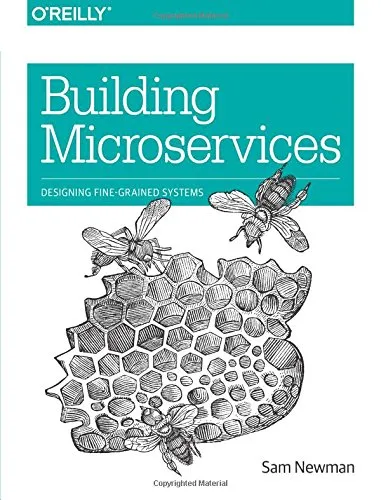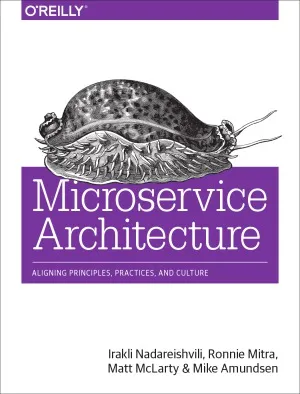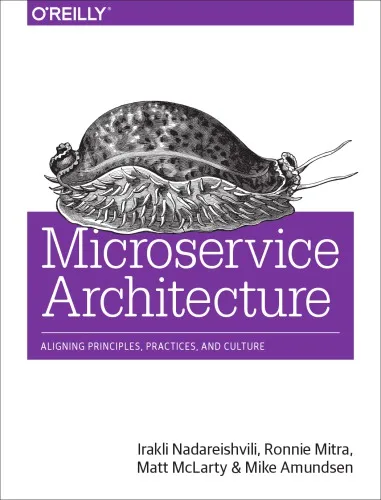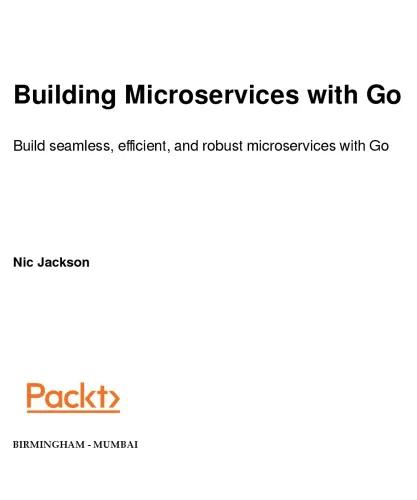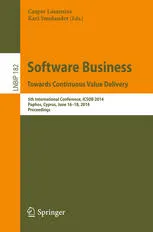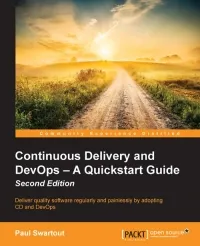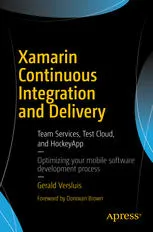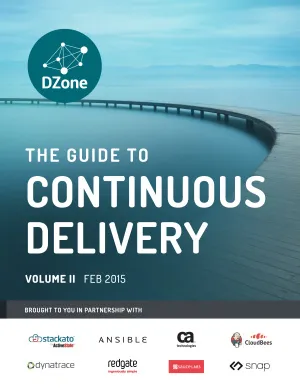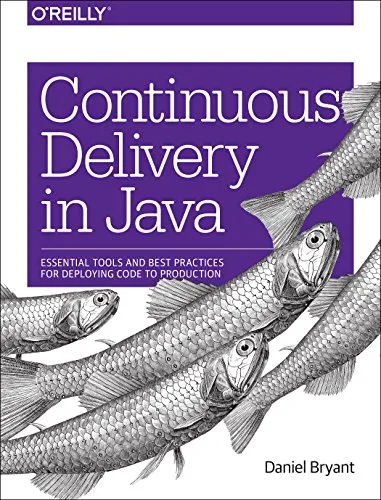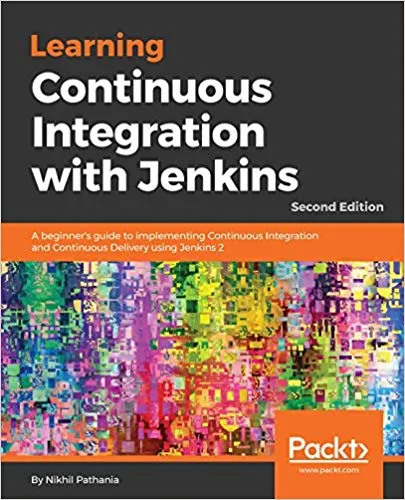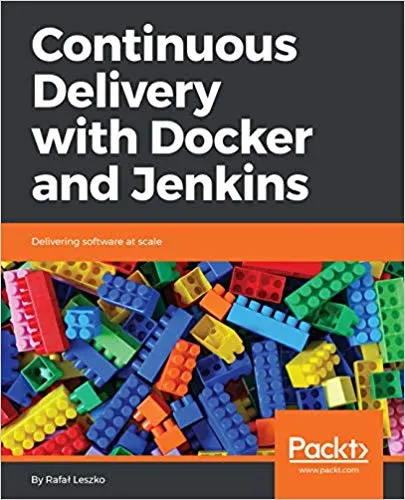Building Microservices
5.0
بر اساس نظر کاربران

شما میتونید سوالاتتون در باره کتاب رو از هوش مصنوعیش بعد از ورود بپرسید
هر دانلود یا پرسش از هوش مصنوعی 2 امتیاز لازم دارد، برای بدست آوردن امتیاز رایگان، به صفحه ی راهنمای امتیازات سر بزنید و یک سری کار ارزشمند انجام بدینکتاب های مرتبط:
Persian Summary
خلاصهای جامع از کتاب 'Building Microservices'
کتاب 'Building Microservices' نوشته سم نیومن، یک مقدمه جامع و عمیق بر روی طراحی و پیادهسازی Microservices برای توسعهدهندگان نرمافزار است. این کتاب به تحلیل اصول و روشهایی میپردازد که میتوانند به تسهیل و بهینهسازی روند توسعه نرمافزار کمک کنند. نویسنده با توجه به تجربیات عملی و مثالهای متنوع، خوانندگان را با چالشها و مزایای این الگوی معماری آشنا میکند.
نکات کلیدی کتاب
- چگونه Microservices به تیمها اجازه میدهد تا سریعتر و با کارآمدی بیشتری نرمافزار تولید کنند.
- راهنمایی برای تقسیم صحیح سیستمها به سرویسهای کوچکتر و مستقل و جلوگیری از تشکیل Service Dependency.
- بررسی چالشهای پیادهسازی نظیر Logging، Monitoring، و Security در محیطهای Microservices.
- شیوههای برتر برای مدیریت دادهها و Consistency در Microservices.
- اهمیت Culture و Team Collaboration در موفقیت اجرای معماری Microservices.
نقل قولهای معروف از کتاب
«Microservices نه تنها یک تکنولوژی، بلکه یک طرز فکر و فرهنگ توسعه است.»
«موفقیت یک سیستم Microservices بستگی به توانایی در ساخت تیمهایی دارد که مسئولیت کامل سرویسهای خود را بر عهده بگیرند.»
چرا این کتاب مهم است
در دنیای امروز که تغییرات سریع و افزایش پیچیدگیها در توسعه نرمافزار وجود دارد، معماری Microservices بهعنوان یک راهحل جهت انعطافپذیری و مقیاسپذیری بهتر مطرح شده است. کتاب 'Building Microservices' یک راهنمای ارزشمند برای کسانی است که به دنبال درک عمیق و عملی از این معماری هستند. این کتاب با نشان دادن راههای مختلف پیادهسازی و تجارب واقعی، به توسعهدهندگان کمک میکند تا از اشتباهات رایج دوری کرده و بهترین شیوهها را به کار گیرند. همچنین، با توجه به نفوذ روزافزون Microservices در صنعت نرمافزار، این کتاب میتواند نقطه آغازی برای تغییرات مثبت در سازمانها باشد.
Introduction to 'Building Microservices'
Welcome to the world of microservices, a prominent architectural style that has revolutionized the way we build, scale, and maintain modern applications. In 'Building Microservices', Sam Newman unravels the complexities of breaking down applications into manageable, deployable, and scalable components. This book serves as an essential guide for developers, architects, and technical leaders who are embarking on a journey to transform their architectural approach and embrace the microservices paradigm.
Detailed Summary of the Book
'Building Microservices' delves into the intricate details of designing and implementing microservices architecture. It begins by addressing the fundamental question of what microservices are and why they are beneficial. The book explores concepts such as service cohesion, autonomy, and lifecycle management. Newman emphasizes the importance of aligning microservices with business capabilities, helping developers design services that resonate with organizational goals.
Throughout the book, readers will find practical guidance on various aspects like service modeling, integration strategies, and data management. Newman discusses how to handle inter-service communication effectively using REST, messaging, and even event-driven architectures. Furthermore, the book provides insights into scaling microservices and the pivotal role of DevOps practices in ensuring smooth and efficient deployments.
Observability is another key topic covered extensively in the book, showcasing how monitoring and logging play a crucial part in managing microservices environments. Newman also discusses how to handle failure in distributed systems and the necessary steps to achieve resiliency and fault tolerance.
Key Takeaways
- Understanding the core concepts of microservices and their benefits in building scalable systems.
- Techniques to design services that align with business goals and domain-driven design principles.
- Insight into the importance of DevOps principles in the microservices lifecycle.
- Strategies for managing data consistency and integration between services.
- Best practices for monitoring, logging, and securing microservices ecosystems.
Famous Quotes from the Book
"Microservices are not a silver bullet. They are a tool, and like all tools, they come with their own set of trade-offs."
"The decision to embrace microservices should be driven by the desires to break apart applications for better encapsulation and to align systems with business goals."
Why This Book Matters
In the rapidly evolving landscape of technology, adapting to change is not just an option but a necessity. 'Building Microservices' matters because it bridges the gap between theory and practice, offering readers not only the "what" but also the "how" of microservices architecture. Sam Newman addresses real-world challenges faced by organizations and provides actionable insights backed by industry experience. With the rise of cloud computing and the growing need for scalable solutions, this book equips its readers with the knowledge and tools necessary to successfully navigate the microservices journey. Whether you are starting from scratch or evolving from a monolithic architecture, this book is a pivotal resource in achieving technological prowess and operational efficiency.
دانلود رایگان مستقیم
شما میتونید سوالاتتون در باره کتاب رو از هوش مصنوعیش بعد از ورود بپرسید
دسترسی به کتابها از طریق پلتفرمهای قانونی و کتابخانههای عمومی نه تنها از حقوق نویسندگان و ناشران حمایت میکند، بلکه به پایداری فرهنگ کتابخوانی نیز کمک میرساند. پیش از دانلود، لحظهای به بررسی این گزینهها فکر کنید.
این کتاب رو در پلتفرم های دیگه ببینید
WorldCat به شما کمک میکنه تا کتاب ها رو در کتابخانه های سراسر دنیا پیدا کنید
امتیازها، نظرات تخصصی و صحبت ها درباره کتاب را در Goodreads ببینید
کتابهای کمیاب یا دست دوم را در AbeBooks پیدا کنید و بخرید
سوالات پرسیده شده از این کتاب
2039
بازدید5.0
امتیاز1
نظر98%
رضایتنظرات:
5.0
بر اساس 1 نظر کاربران
pouya7
22 دسامبر 2024، ساعت 17:45
give me summry second chapter
Questions & Answers
Ask questions about this book or help others by answering
No questions yet. Be the first to ask!
